The Best Women's Running Shoes 2018

If you’re a woman in the market for new running shoes, it’s easy to spend hours and hours searching for the perfect sneaker with the right look, fit, five-star review, comfort level and price. Luckily, we’ve been there and done that to help take the guesswork out of shopping for new running shoes.
When choosing the best running shoes, there are several features to consider: weight, support level, the sole (made up of the out sole layer, midsole or cushioning layer and the underfoot layer), the upper (body of the shoe, toe box and heel fit), heel drop height (how fat a running shoe's heel feels) and more.
After consulting some pro runners, two SI staffers with backgrounds in marathon running and athletics set out to find the best-of-the-best in women’s running shoes right now. We tested on the streets of New York City, on sidewalks, gravel paths and trails around New Jersey and in the gym, on treadmills and elliptical machines. Our testers even took the shoes into spin class, on weekend errands and onto the gym floor for post-run stretching or weight-lifting workouts, because who actually ends up only running in their running sneakers?
So whether you’re looking for a shoe for speed, one for comfort during long miles or a cute sneaker that will take you from a jog to the gym to brunch, we’ve got you covered. Below, we’ve found the best women’s running shoes you can buy right now, including our top pick, the Brooks Glycerin 14, and more favorites from Nike, adidas, Asics, New Balance and more.
Our top picks
The Best: Brooks Levitate
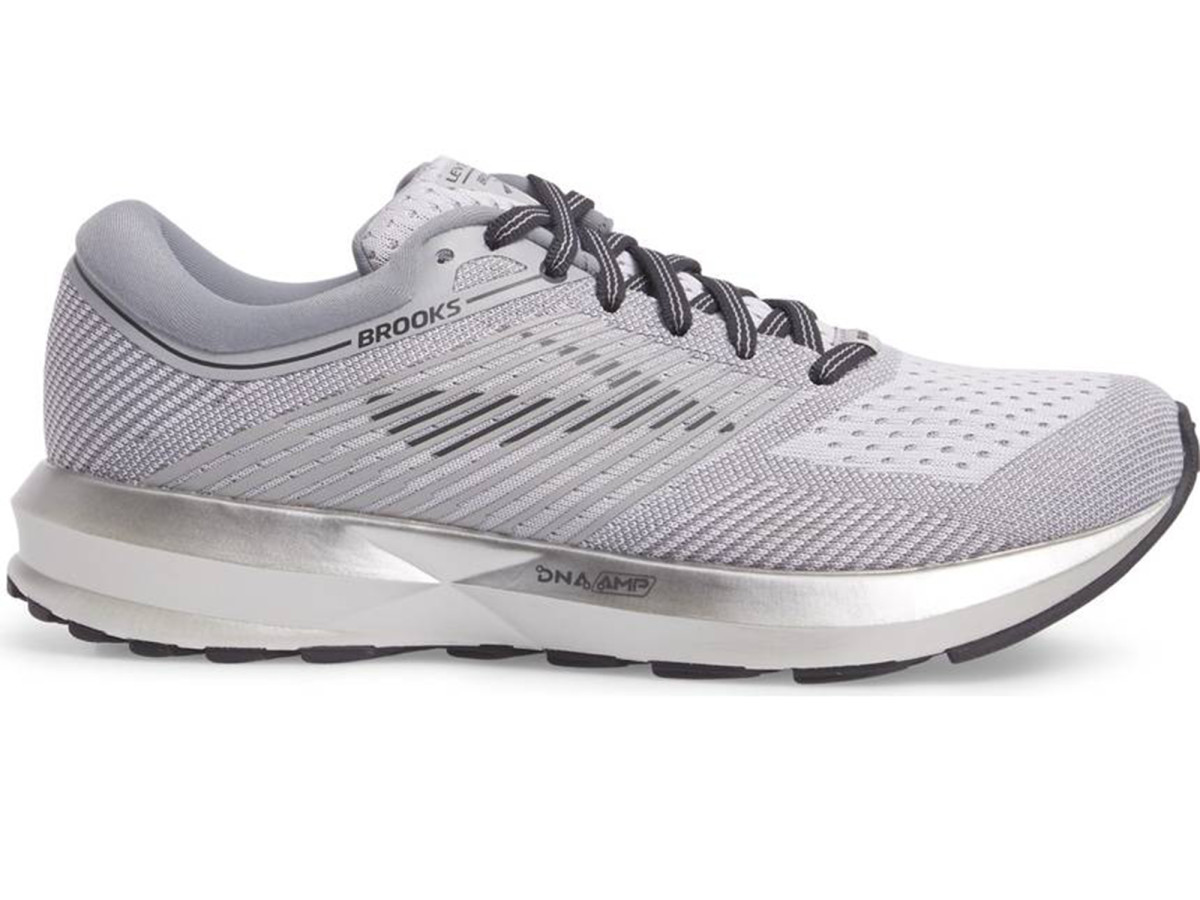
Available at brooksrunning.com, zappos.com, nordstrom.com, $150
Last fall, Brooks released its brand-new Levitate, a performance shoe featuring DNA AMP midsole technology that promised to return energy to the runner amid a springy, responsive ride. As a long-time Glycerin lover (and general enthusiast of more cushioned shoes) I was excited and curious to try this neutral shoe that’s touted as part of Brooks’ ‘energize’ line.
When I tugged the Levitate on and laced up for the first time, I immediately noticed how the FitKnit upper comfortably embraced my slightly-wider-than-average foot, the flat laces didn’t pinch or rub on the top of my foot and my average-heigh arches felt supported but not imposed-on. I always put the laces through the extra last hole to prevent any heel slippage, and while I sometimes struggle because the laces are too short, I had no issues with the Levitate. There was minimal readjustment of the shoe after I tied the knots for the first time—overall, a great first impression.
Out on the run I was pleasantly surprised by how the shoes felt like the perfect intermediary for me. They didn’t feel too bulky yet they didn’t feel too minimal. They didn’t feel too plush and they didn’t feel too stiff. I thought that the Levitate would be more lightweight than the Glycerin, but at 9.7 ounces, that’s not quite the case.
I have since put 250+ miles on my shoes, and the Levitate has become my go-to for the 20 (or so) miles that I run weekly. This shoe is the best of both worlds—for me, a cushioned-shoe lover with no issues with pronation. The responsiveness makes you feel quick during speedwork or a 5K, but the cushion feels plush enough to wear these shoes during an easy recovery run. I feel incredibly supported in these shoes and would feel confident running a half marathon or a marathon in them.
If you are looking for a low-profile, light-as-air, flexible shoe, the Levitate is not the shoe for you. But someone looking for an everyday trainer should be intrigued by the newest addition to the Brooks arsenal.
The Next Best
Nike Epic React Flyknit
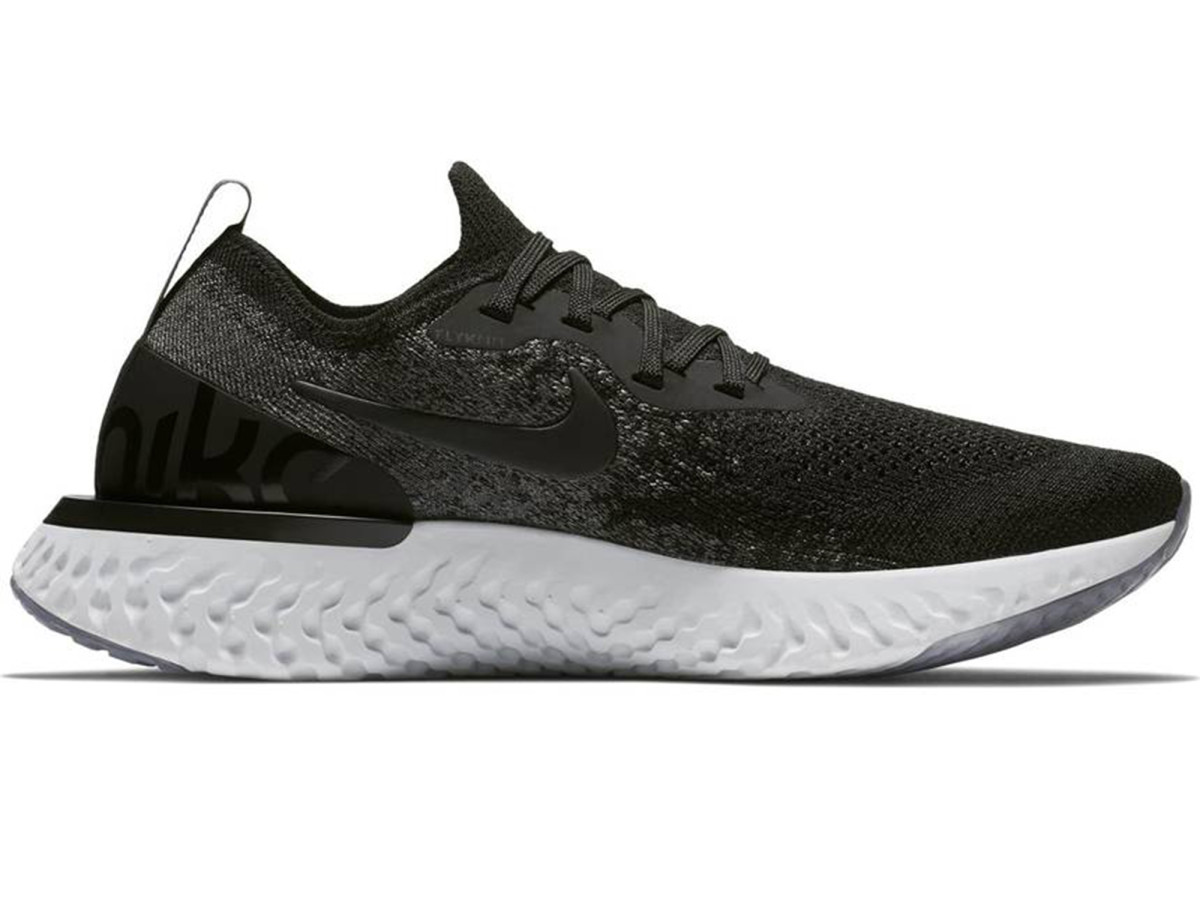
Available at nike.com, nordstrom.com, $150
The Nike Epic React Flyknit should be considered as a co-winner for best women’s running shoe next to the Brooks Levitate. The choice will really come down to your personal preference—in my case, I turn to the Epic React almost always, except for when I’m planning to log some serious miles. I’ve learned that I prefer a bit more support for longer distances, but if you are a runner who always loves a lightweight, springy and comfortable shoe, the Epic React Flyknit may be the pick for you.
The designers of the shoe said they wanted it to feel like the shoe “just disappears” on the foot, and I definitely get that feeling when I wear the sneakers, whether it is while running, doing stretches or exercises or simply walking around. The sock-like Flyknit material is more snug and better fitting than previous Flyknit sneakers, such as a previous Nike model, the Lunar Epic Flyknit 2s. The lacing is also superior—the flat laces lay cleanly and comfortably on the top of your foot and rarely come untied, a problem I’ve noticed with previous Nike running sneakers. In addition, I don’t feel the need to lace up the sneakers super-tight in order to get that “locked in” feeling I crave before I set out on a run. The Epic Reacts are form-fitting and provide that springy feel underfoot that gives an extra boost during workouts.
Overall, the sneakers feel great on my feet—soft and squishy, but not too much, with a nice bouncy feel underfoot and a comfortable fit—and I think anyone looking for a sleek running shoe that provides a wide range of benefits should at least give these shoes a try. But I’m warning you: once you slide your foot into these babies, you might abandon the rest of the choices in your closet for a while. I know I did!
More women’s running shoes options
Brooks Glycerin 14
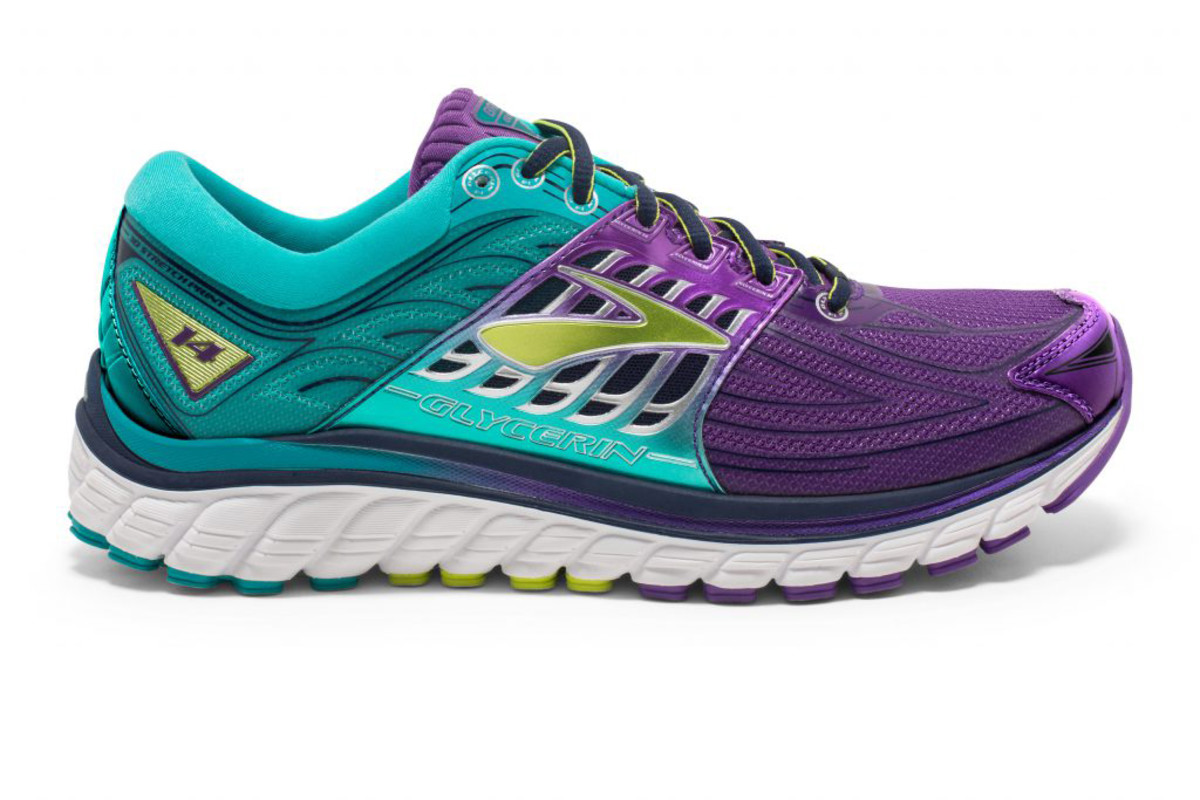
Available at brooksrunning.com, zappos.com, footlocker.com, $150
Brooks running shoes are a go-to choice for many, but no doubt about it—the Brooks Glycerin 14 is a shoe that can do it all. Running anywhere between 15 and 45 miles a week? Training for a half marathon or a full marathon? Doing some occasional speed work? Taking your runs to the dirt on occasion or just taking extended walks around the neighborhood? The Glycerin is the shoe for you.
The Glycerin is the top level of cushioning shoes (without stabilization) offered by Brooks, and the runner can feel it the second he or she laces up. The super DNA midsole creates a soft yet stable ride, and the toebox fits snugly but still provides enough wiggle room for my wide foot. The sole is surprisingly flexible for a shoe with this much cushion, and the upper area of the shoe is breathable—no soggy shoes during even the sweatiest of runs.
As much as we praise the Glycerin’s cushioned nature, the extra plush means that it’s far from the lightest shoe on the market at 9.5 ounces. But that doesn’t mean you can’t take it for a track session or for a quick 5K. Also, these shoes don’t provide any additional stability for a severe over- or under-pronator, but the additional cushion underfoot may be enough for someone with a slight roll.
The only major sticking point with this shoe? The $150 price. And it usually doesn’t ever go on sale. As someone who has worn four different models of the shoe, the only time I’ve seen a discounted price is at a race expo selling slightly used shoes. Maybe I don’t look hard enough, but this shoe has devoted followers who clear the racks without a discount. Luckily, these shoes have no problem pushing past 400 miles on a pair.
Adidas alphaBounce
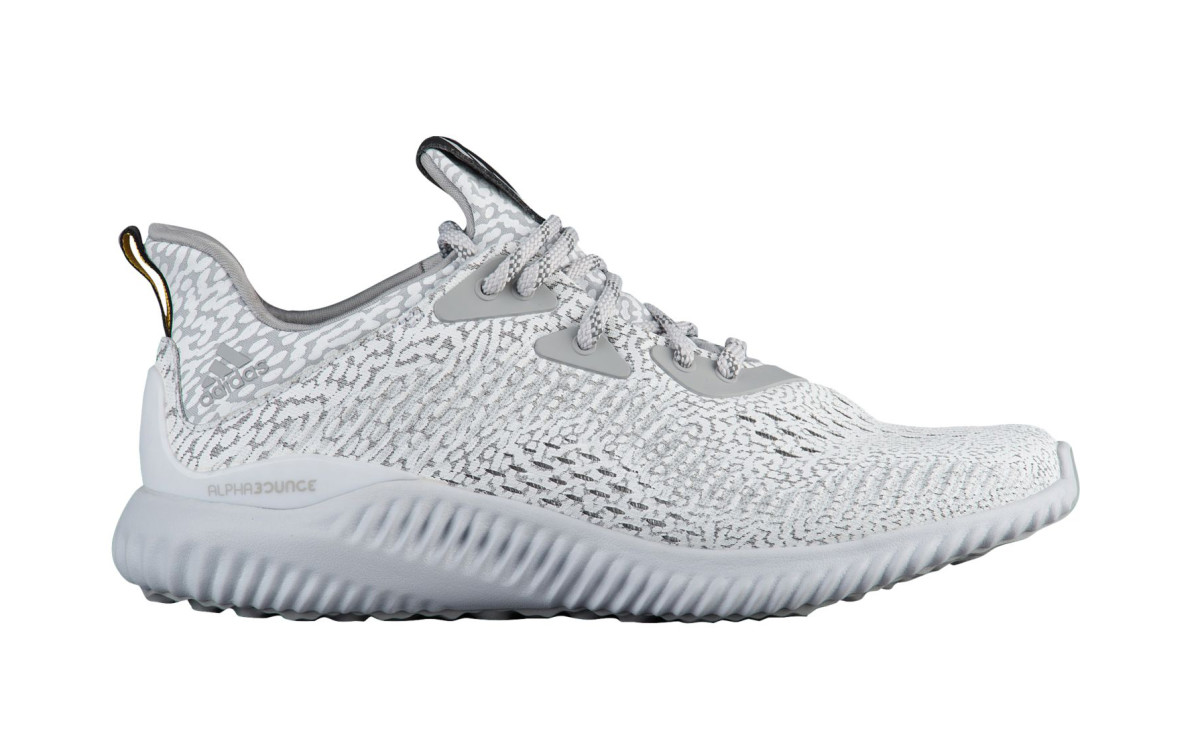
Available at adidas.com, zappos.com, bloomingdales.com, $110
Adidas running shoes have gained popularity in recent years due to their light weight and comfortable feel. The Adidas alphaBounce has the same core traits, and its sock-like construction eliminates the tongue, which also gets rid of any shifting or uncomfortable bunching during runs. I felt that it was a little sturdier than other shoes with a similar, attached-tongue style. The shoe is easy to slip on and off, but I did find it took more time than a traditional shoe to tighten the laces to my desired fit than normal.
The adidas "Bounce" technology is very comfortable and flexible but still provides support underneath the foot so it doesn't feel like you're running on the ground. If pronation issues are something you deal with you may want to look elsewhere, as this shoe is made for a more neutral runner with good technique. Unlike some other adidas running shoes—such as the PureBOOST X or UltraBoost X, a shoe designed with a women's-specific fit—I felt that I had more lateral stability in this shoe.
Because of the modern look and all-white colorway of the shoe (it also comes in all-black and other color duos), I would name the alphaBounce as the most versatile running shoe. I could see myself easily taking this shoe from a treadmill workout to a lifting session in the gym, or an outdoor Saturday morning run to brunch with friends. It looks good on your feet and pairs easily with both classic running gear and your more trendy athleisure pieces.
The best part? Compared with other top adidas running shoes, the alphaBounce retails at an affordable $100. With a design built for runners who also find themselves bouncing around from the gym to the track to the court, this multi-purpose shoe is a solid choice and good addition to your closet.
Asics FuzeX Rush

Available at asics.com, zappos.com, amazon.com, $100
I had never worn an Asics running shoe before trying out the AsicsFuzeX Rush, a lightweight and versatile performance running shoe. When sliding my foot into the shoe, I immediately noticed that the shoe has a snug fit—almost too tight for my admittedly wide foot—but when it was on, my toes could stretch without any pain or restriction. The upper part of the shoe is a flexible, breathable knit, and my heel felt cradled by the shoe and locked in place. The shoe felt flat with a lack of arch support, which might cause me to use inserts down as I log more miles. The laces are designed to lie flush with the top of the foot to cut down on the bulk, but I found that they were slippery and prone to coming untied—make sure they’re double-knotted before you leave for a run!
I set out for a six-mile run at about a 9:00 min/mile pace, mostly on sidewalks but also about 3/4 of a mile on a gravel path. The foam-based sole felt thinner and stiffer than the thicker, Nimbus-style cushion that I’m used to, and I felt every lump and bump that I stepped on. But the shoe felt incredibly responsive, and I could recognize that my turnover was quicker.
For the first three miles, I was dreaming of quick track workouts and 5K PRs, thinking this shoe could unlock the speed that was always inside me. But sometime between the third and fourth mile, the ball of my foot began to ache, and I had to stop and loosen the laces to reduce the pressure across my forefoot.
Too much, too soon on a shoe with less cushion and a lower heel-to-toe drop than I’m used to? You bet. My feet and legs are clearly not used to the structure of these shoes, and as a result, my Achilles’ tendon was sore the following day. But for runners who are used to a more lightweight shoe, this is a good option for this is a strong option for everything from a casual run to a track workout.
New Balance Fresh Foam Zante v3
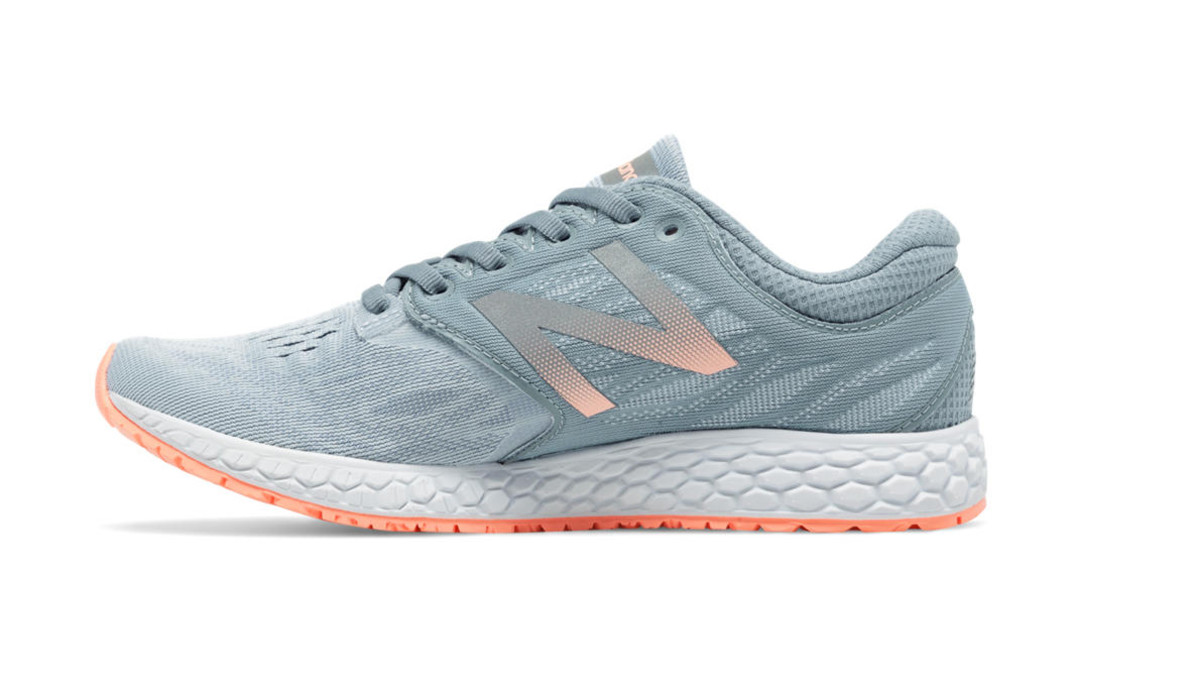
Available at zappos.com, newbalance.com, $100
As soon as I put these New Balance running shoes on, I was surprised—and instantly energized—by the lightweight, springy feel beneath my feet. My big cup of Sunday morning coffee could’ve played a role, but as soon as I hit the road for my run I felt a little pop in my step that instantly made me pick up my tempo.
Out of the box, the shoe felt stiff and I was concerned there wouldn’t be enough support during longer runs. But once I put it on, the slim, sleek fit conformed nicely to my foot and was still comfortable in the toe area, though some runners with wider feet may find them too narrow. The feel of the “Fresh Foam” cushioning was smooth and responsive, and I thought it gave a good balance of supportiveness and that barefoot-feel that many runners like.
During a fast, tempo run—and during some post-run stretching and bodyweight exercises—the Zante v3 felt like it was at it’s best. However, during a more easy-going recovery run, I found myself wishing for something a bit more supportive and flexible. The construction of the shoe is built for speed and it stiffened up a bit after several slower miles, leaving my foot a bit sore afterwards.
Overall, the look and feel of the Zante v3 is great, and the price tag is even better. Retailing for just $99.95, it’s the best bang-for-your-buck deal and one of the most affordable on our lists, plus it’s available in six great color combos (including classic black, for those who like to stick to the basics).
Nike Free RN 2017
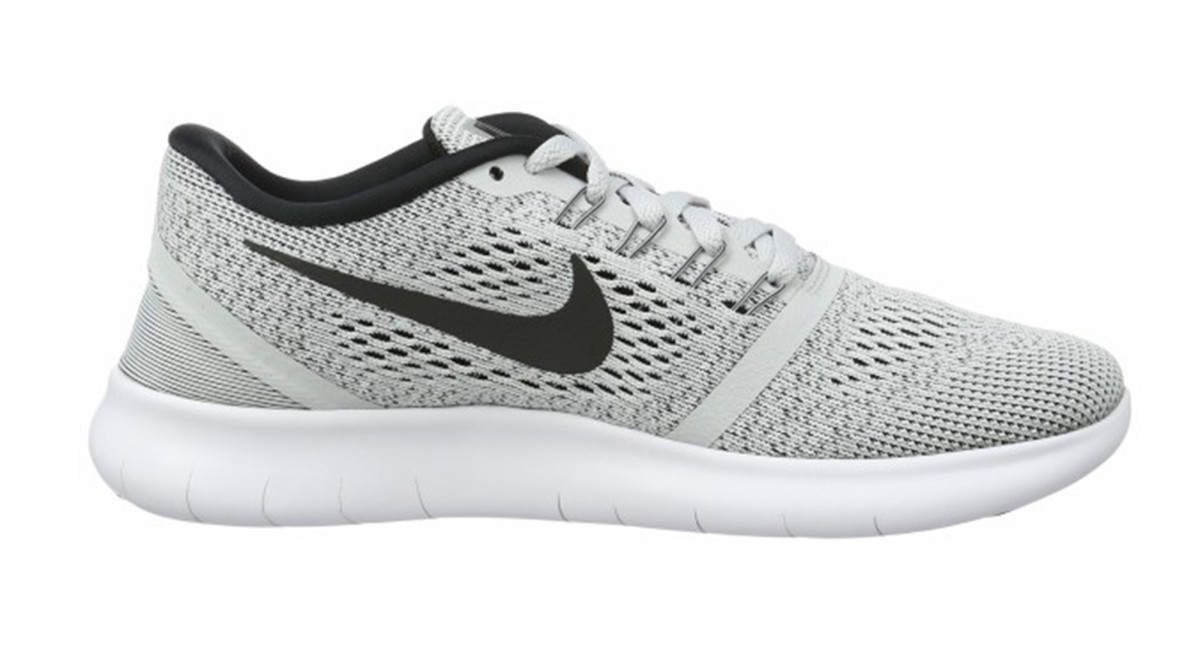
Available at nike.com, zappos.com, bloomingdales.com, finishline.com, $100
Out of the box, the shoes looked a little bit smaller than I was used to for my usual 8.5 women's size in Nike, but on my feet they felt snug (in a good way) and I didn't have any discomfort. (Though I'd recommend to keep the smaller sizing in mind, especially if you tend to run a bit larger in Nike running shoes sizing.)
The knit material is lightweight and breathable, and like the Nike LunarEpic Flyknit 2 which we tapped as our second best women's running shoe, the cushioning provides a flexible, pillow-like feel with every step. I logged a short, 2-mile recovery run and took the Nike Free RN distance to the gym for some cardio and strength training workouts, and the shoe was comfortable and efficient for both. I don't think I would run longer than three miles or so in these sneakers, though my preference is for a more supportive shoe for longer distances.
If you're looking for an affordable pair of running sneakers that will cover short runs, cardio and weightlifting at the gym, and shopping trips and brunch dates, these are well worth it. At the listing price of $100 they are certainly affordable, but with discounts available at several retailers, they are a steal! I'd get two pairs, in one of the 19(!) colorways available.
Our Experts
Using some initial feedback from professional marathon runners, two SI staffers—Bette Marston and Jamie Lisanti—set out to find the best women’s running shoes available right now. In the last five years, Marston has run 10 half marathons, three marathons and plenty of shorter-distance races. She’s also logged thousands of training miles in Central Park in New York City and Liberty State Park in New Jersey, and when she’s not running, you can find her at the gym, hiking or in a spin class. A former college athlete, Lisanti has logged hundreds of training miles on the road and on grass and turf soccer fields over the years, and regularly takes on running routes and trails around New Jersey. Her workouts also include short-distance speed days on the track, interval training on the treadmill and weight lifting in the gym. Full disclosure on our experts’ foot sizes and types: Marston wears a women’s size 10 and has feet with an average arch height but a wider-than-average width, though not enough to warrant wearing a wide shoe; Lisanti wears a women’s size 8.5 and has feet with an above-average arch.
The Testing Method
Marston and Lisanti tried several new models, most of them neutral running shoes from top brands, including Asics, Brooks, Nike, adidas and more. The sneakers were tested during runs on the streets of New York City, on sidewalks and gravel paths in Liberty State Park in Jersey City, on the roads and trails of Garret Mountain Reservation in Woodland Park, N.J., and more. Both testers also wore the shoes at the gym, both on treadmills and elliptical machines, and during other cardio and weightlifting workouts. Marston and Lisanti also wore the sneakers for everyday errands and walking. The testers’ runs ranged from two miles to 26.2 miles—Marston has put more than 700 miles combined on two different pairs of the Brooks Glycerin 14—and some shoes were also worn while hiking and stuffed into bike cages during spin classes.
(Read SI's affiliate link policy here.)
